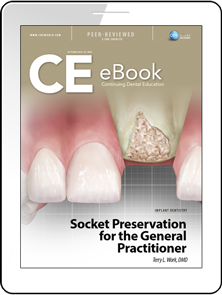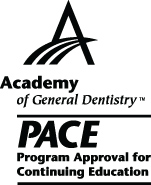CDEWorld > eBooks > Socket Preservation for the General Practitioner


ADA CERP is a service of the American Dental Association to assist dental professionals in identifying quality providers of continuing dental education. ADA CERP does not approve or endorse individual courses or instructors, nor does it imply acceptance of credit house by boards of dentistry. Concerns or complaints about a CE provider may be directed to the provider or to ADA CERP at www.ada.org/cerp/

Approved PACE Program Provider. FAGD/MAGD credit. Approval does not imply acceptance by a state or provincial board of dentistry, or AGD endorsement. 1/1/2023 to 12/31/2028. ID # 209722.
eBook
Released: Thursday, October 13, 2016
Expires: Thursday, October 31, 2019
Socket Preservation for the General Practitioner
By Terry L. Work, DMD
Commercial Supporter: KaVo Dental
There are numerous benefits to incorporating socket preservation into a general dental practice. This article describes the different materials necessary for the procedure and shows step-by-step photographs of the process. It discusses proper case selection and treatment recommendations, describes classes of bony defects, and outlines postoperative follow-up. It also explains the importance of atraumatic tooth removal and defines the stages of socket healing. In addition, the article includes a discussion of the different grafting materials used, including their pros and cons, as well as the various types of membranes and their uses. Incorporation of socket grafting into a general dental practice is also discussed, outlining advantages for both patient and practitioner.
LEARNING OBJECTIVES:
-
Identify cases that are good candidates for socket preservation
-
Discuss the importance of atraumatic tooth extractions
-
Delineate the materials that can be used to perform socket preservation
-
Explain how to implement socket preservation into a general dental practice
About the Author
Terry L. Work
Private Practice, Scottsdale, Arizona


